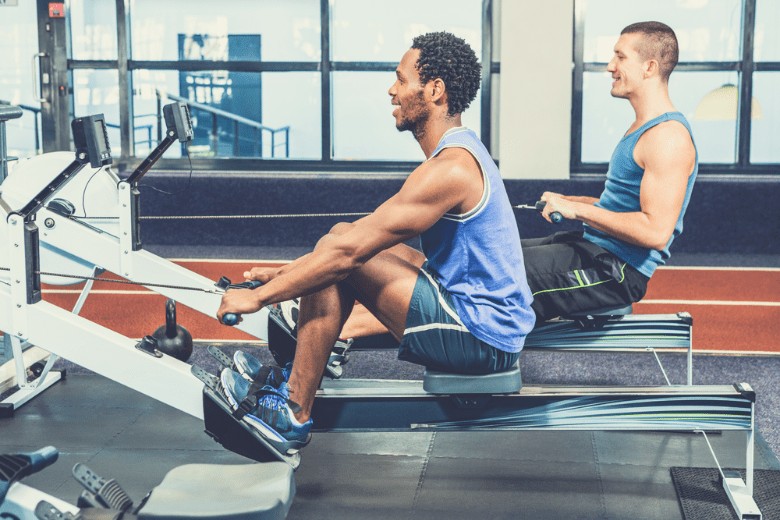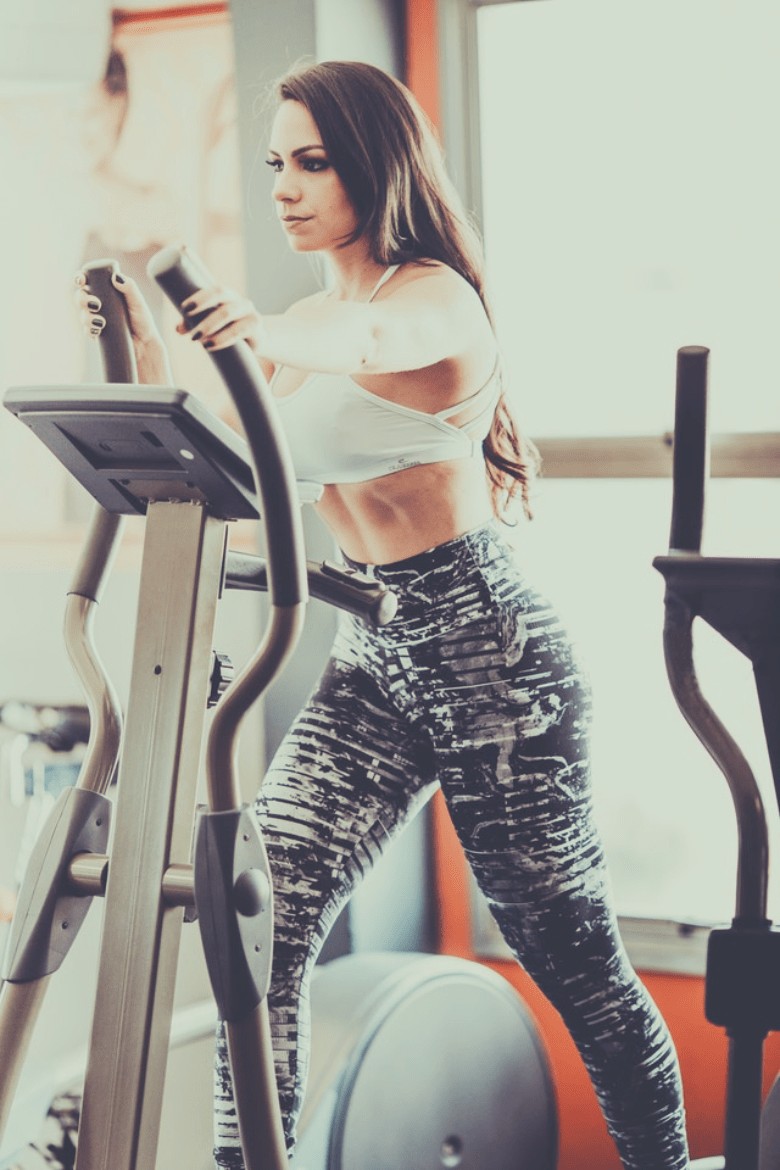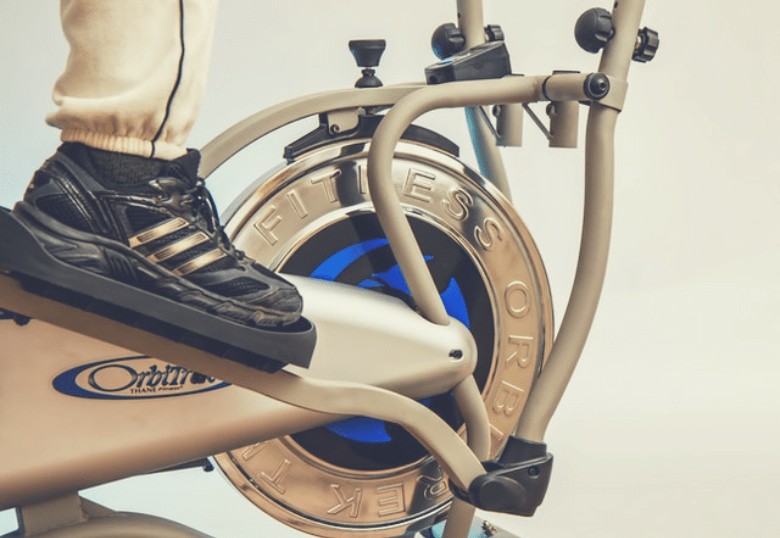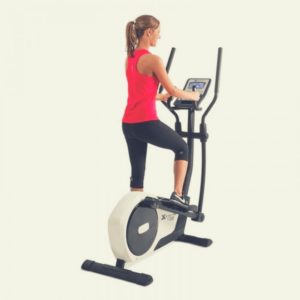There is no doubt that cardio is a necessity if you want to be in great shape.
That’s why there are so many cardio machines to choose from on the market.
It can be hard to choose between one or the other, so a little research can help you weigh the benefits of the machines.
Two popular cardio machines worth comparing are the rowing machine vs. elliptical machine.
While both can give you a great cardio workout, there are some differences that can sway your choice one way or the other.
Keep reading to find out more.
Rowing Machine vs. Elliptical: How to Choose
Some people are lucky.
They can look at an exercise machine and say, “nope, that’s not for me!” For these people, it must be nice to not be conflicted.
However, for the rest of us discerning fitness nuts, we need to make sure that we get the right machine that will give us the best chance at fulfilling our fitness goals.
Just picking any machine won’t do. That leads us to the question, “how do you choose between a rowing machine and an elliptical?”
The best way to choose one over the other is by looking at features and what each machine can do for you.
The next two sections will describe what each machine works out on your body.
Rowing Machine Muscle Benefits
One of the primary benefits of a rowing machine is that it provides you with a total body workout.
You’ll get one of the most intense cardio sessions ever, but rowing machines also provide you with a resistance workout.
It hits all the important muscle groups, including your core. It’s truly an all-in-one machine.
It’s amazing that a low-impact machine can do so much.
The rowing action along with the sliding action is highly efficient.
Of course, there are rowing machines that don’t have sliding seats, but that would almost defeat the purpose of getting a rowing machine.
With this machine, you’ll even target small areas like your wrists and ankles.
Rowing machines seem like the perfect solution to every work out need, and they can be.
However, you should keep in mind that they can be intense.
Ellipticals Machine Muscle Benefits
Ellipticals are an excellent choice for a hardcore cardio session.
They offer some resistance training, but not as much as rowing machines. However, this doesn’t mean you won’t get an effective, total body workout with an elliptical.
Ellipticals primarily exercise your lower body.
You will basically target every muscle in your legs, your glutes, and your back. Because of the arm action, your arms and shoulders will get a decent workout.
These machines do engage your core, although not as much as rowing machines.
They don’t specifically target your abs.
That could be a big push towards the rowing machine for some people. However, don’t decide just yet.
Keep reading for more comparisons.
Types of Rowing Machines and Ellipticals
If you’re deciding which machine is the best investment, you’ll need to know about the different types of each one.
This is because each type varies in ways that may change your workout or the benefits that you get from the workout.
We’ll start with different types of rowing machines.
Types of Rowing Machines

Air/Flywheel Rowers
These rowers use fan blades and air for resistance. They’re provide a more natural rowing experience than some of the other types. They are popular among competitive rowers.
Hydraulic Rowers
These use a piston filled with air or fluid to generate resistance. Hydraulic rowers are the most inexpensive type of rowers and they’re also the most compact.
They will give you a good workout but don’t mimic the natural rowing form.
Magnetic Rowers
Magnetic rowers are great for people who like silent machines. Since it uses a magnetic braking system, there is no friction created which would be the source of the noise.
This is the most expensive type of rowers.
Water Rowers
These rowers are also incredibly quiet and can also be stylish because they’re often made with a wooden frame.
The resistance comes from a flywheel that is designed for water instead of air. The only noise you would hear is the gentle swish of the water.
Types of Ellipticals

Standard Ellipticals
These ellipticals aren’t the most common, but they can be money savers. This is because the handlebars don’t move on these, so you’ll only work your lower body.
Elliptical Cross Trainers
This type of elliptical is usually what people think of when they think of an elliptical. The handlebars move and the foot pedals move in a circular motion.
Elliptical Glider
This type of elliptical looks much like an elliptical cross trainer.
The difference is that the foot pedals don’t move in a circular motion. The move up and down and slightly back and forward.
Recumbent Elliptical
These ellipticals have seats for sitting while working out.
They look like a recumbent exercise bike, but the strides are longer, and it will have less of an impact on your joints. This is great for people with mobility issues.
The biggest takeaway from looking at the different types of each machine is the versatility among them.
The types of rowers vary when it comes to operation (sound, resistance, etc.). The types of ellipticals have more to do with movements and comfort.
Rowing Machine vs. Elliptical: Comparisons

Ease of Use
There is no doubt that the elliptical is easier to use than a rowing machine, although neither is particularly hard to use.
The rowing machine requires a lot more effort than the elliptical, so it comes off as being harder to use for some people.
However, it really boils down to what you can and can’t do.
The rowing machine is low to the ground and allows you to sit while working out.
On the other hand, the elliptical only requires you to step up onto it.
However, you’ll be supporting your entire body on your own.
Depending on your mobility level, one might be easier than the other for you.
Technique
The elliptical requires a good bit of balance.
There is nothing holding you in place, just two-foot holders.
You can balance yourself by holding on to the handlebars, but most of the balancing is coming from you.
As far as technique is concerned, it’s much easier to have a proper form on an elliptical.
Once you’re balanced and you’re used to the movement, you’ll be in a fixed position, so you won’t have to worry about your form being off.
The handlebars on rowing machines aren’t in a fixed position.
This makes it easier to do the rowing technique wrong.
Rowing machines require coordination.
You’re sitting on a chair which is on a bench, so balance isn’t so much of an issue.
However, you need to coordinate your rowing action with the sliding action for the best results and to prevent injuries.
If you’re good with balance and coordination, then either machine can work for you.
However, if you’re better at one than the other, this could sway your decision on which machine you’d choose.
Effectiveness
The effectiveness of the machine is going to depend on what you want out of it.
If it’s burning calories, then the rowing machine is the better choice.
It burns more calories than the elliptical due to all the muscles it works out.
However, if you’re a runner looking for something to build your leg muscles and endurance, the elliptical is more effective.
Size and Weight

If you’re in the market looking for a machine to add to your home gym, size is going to be important.
You should figure out how much space you have for your machine. If one machine doesn’t fit, then your choice is made for you.
Rowing machines are going to require a lot more space than ellipticals.
Even if you get a folding rower, you’ll still need a good bit of space because it has to be unfolded while you use it.
There are rowers out there that can be eight to nine feet long.
You’ll also need to leave a couple of feet of buffer space all around it for safety reasons (the same goes for ellipticals).
Weight is also a consideration. On average, and depending on the type of rower you get, they can be heavier than ellipticals.
Even though they aren’t much heavier than ellipticals, the extra weight might be something you don’t want to deal with.
Technology
If you like listening to music or using apps while you exercise, a rowing machine isn’t going to be the best choice for that.
While they do have consoles, the average-to-lower priced models aren’t going to be very tech-heavy.
They’ll generally give you your workout stats and if you’re lucky, it may have a back-lit LCD screen.
The rowers that do have fancy consoles are going to cost you a good bit.
With ellipticals, you’ll be more likely to find affordable models with techy consoles.
You’ll be able to get an audio jack, Bluetooth connectivity, multi-colored LCD screens, or possibly even high-definition, full-color monitors for significantly less than a rower.
While none of this affects your workout one way or the other, it’s nice to have features that you want if you’re going to spend your hard-earned money on the machine.
Who Will Be Using the Machine
The users of the machine and their specific needs will influence your decision a lot.
For example, if someone with knee/joint problems will be using the machine, a rowing machine might be too painful for them to use.
With an elliptical, they won’t be bending their knees as much so it will be easier for them.
Another scenario to consider is height.
Some rowers can accommodate tall people, but they usually cost more. However, ellipticals can accommodate any height.
If you don’t want to worry about the tallest person fitting the machine, the elliptical is the way to go.
Is one of the users an athlete?
If they need something more intense and that will give them a challenge, a rowing machine is great for that.
However, if they’re a runner, a cyclist, or any type of athlete involved in a sport where they primarily use their legs, an elliptical could be more beneficial.
Many seniors find that rowing machines are better for them because they’re low to the ground.
Plus, the support of the seat and rail make it more comfortable.
However, research has shown that ellipticals are better than rowing machines for people who have osteoporosis.
In the end, simply analyze what each person that will be using the machine needs out of it. Decide what needs take priority and use that to clarify your decision.
Rowing Machine vs. Elliptical Machine for People Who Travel
If you’re a person who travels and likes to exercise when you’re on the go, you may consider getting a compact/travel elliptical.
This sets ellipticals apart from rowing machines because compact rowing machines are still large.
Travel ellipticals are made with only the foot pedals attached to a base.
These machines can be used at a desk, in places where you don’t have room for a full elliptical, or when you’re traveling.
They’re lightweight and easy to load in and out of your vehicle.
Keep in mind that these ellipticals must be used while sitting because there is nothing for you to balance on.
This same fact makes it comparable to the rowing machine in that you can sit while using it, making even more of a low-impact exercise.
So Which One is the Better Investment?
When choosing the better investment, it all depends on what you need from an exercise machine.
They’re both great machines and they both have pros and cons. You just need to make sure you get the one that will suit your fitness goals.
A few things I can point out about a rowing machine vs. elliptical machine is:
- Ellipticals are more compact and lightweight, so they’re better for small home gyms or for people with minimal space.
- Rowing machines work your core more than ellipticals.
- Rowing machines are better for most athletes unless they’re runners or cyclists.
- Ellipticals are easier to use so they’re more suitable for beginners.
If you go solely on which one gives you the better workout, it would be a rowing machine.
It’s hard to target all muscle groups from a cardio workout, but rowing machines do it like magic.
Pick out what is a priority for you.
Then use the information to choose which one meets that priority. That gives you your answer on which one is the best investment.



